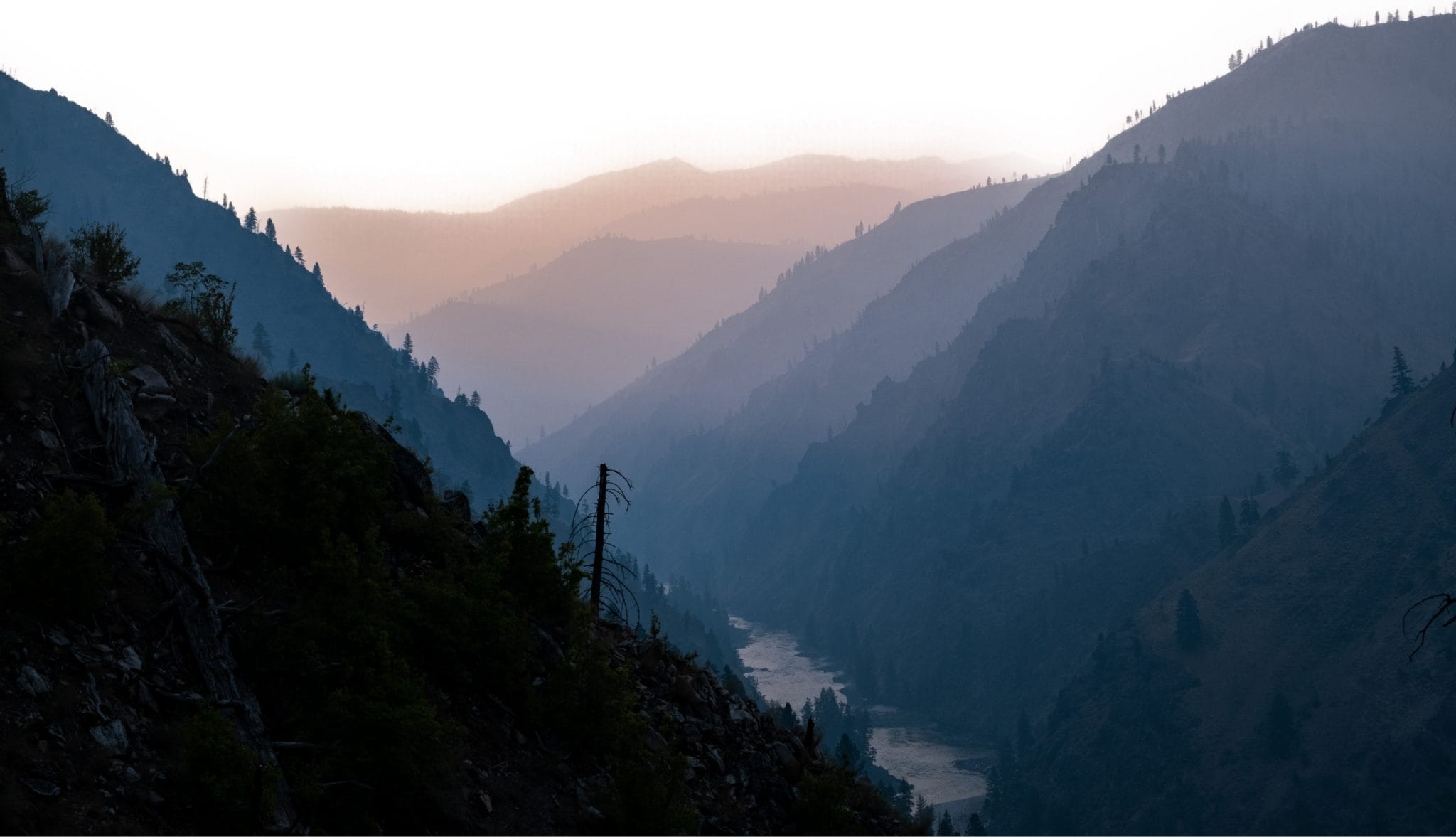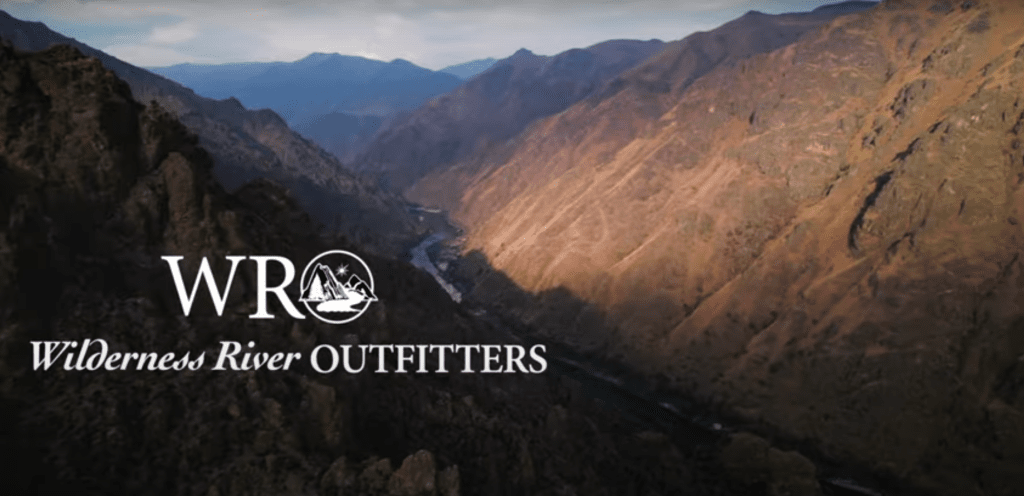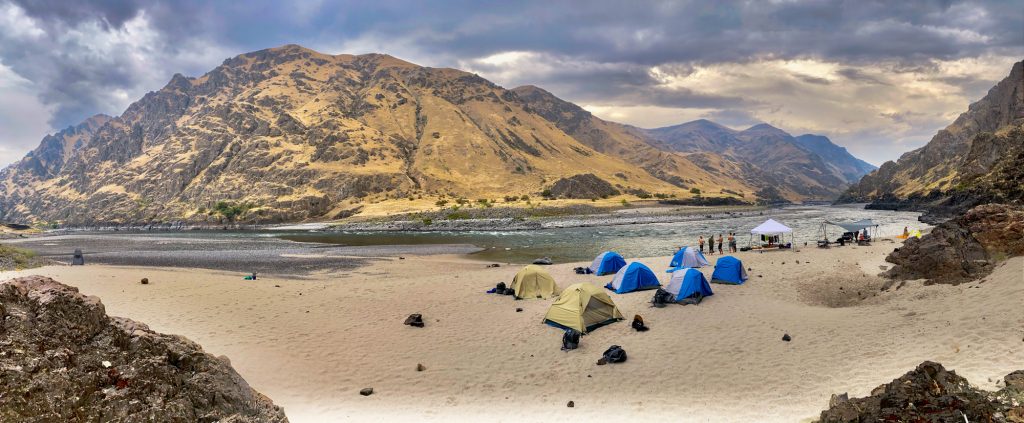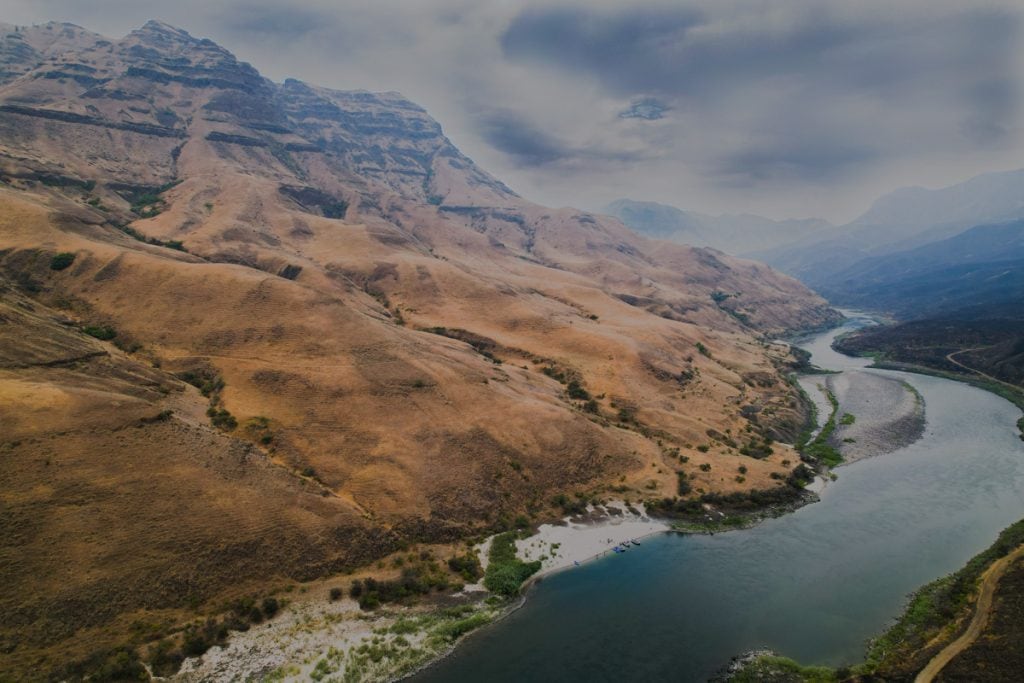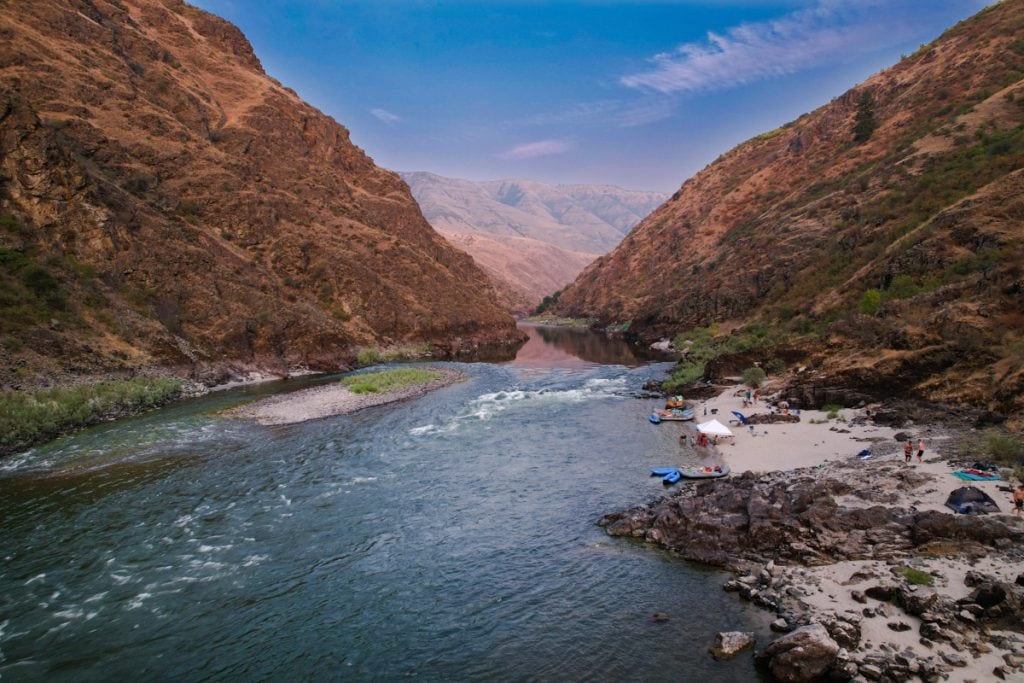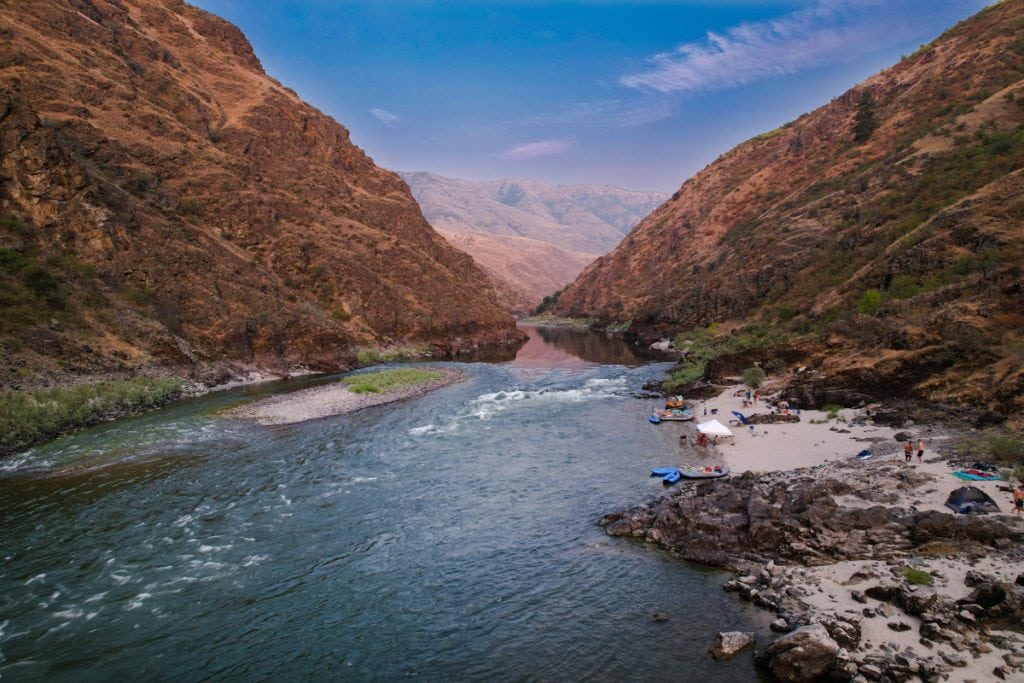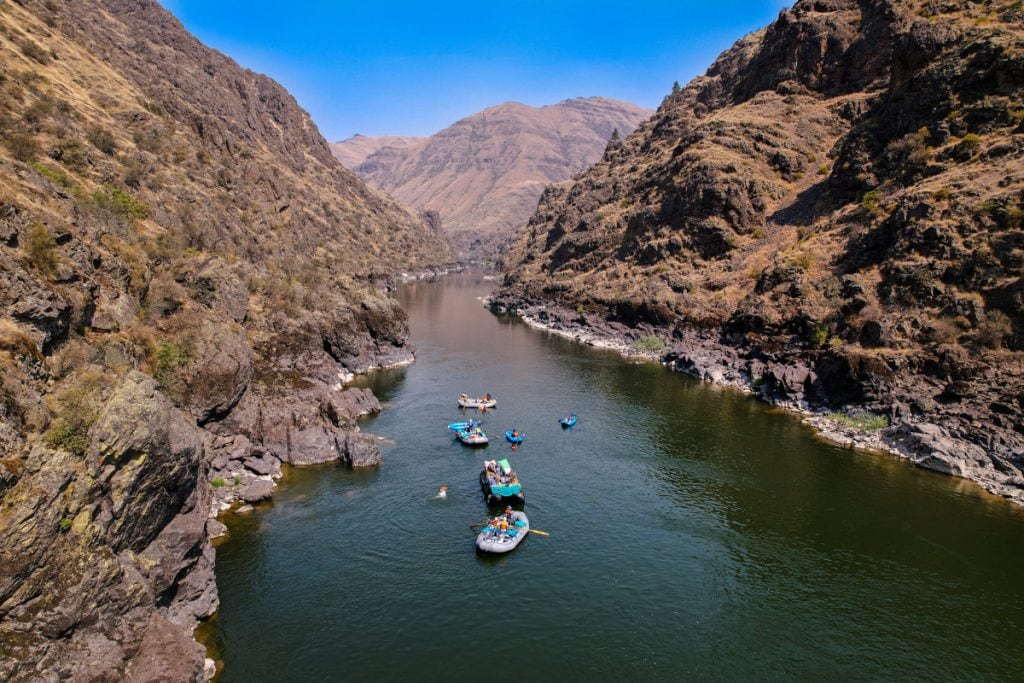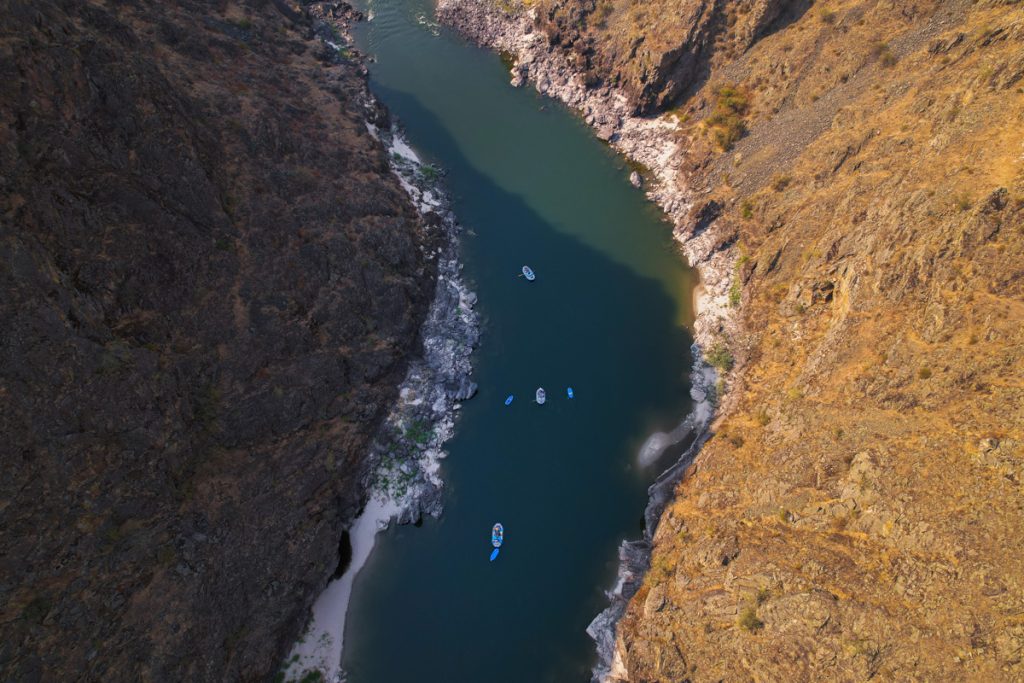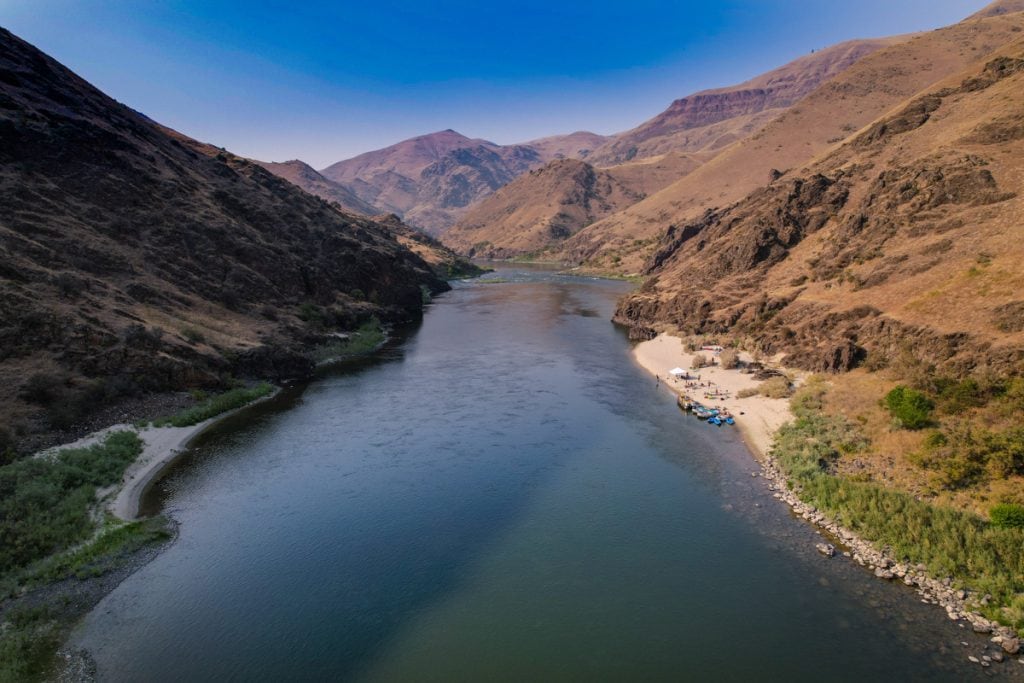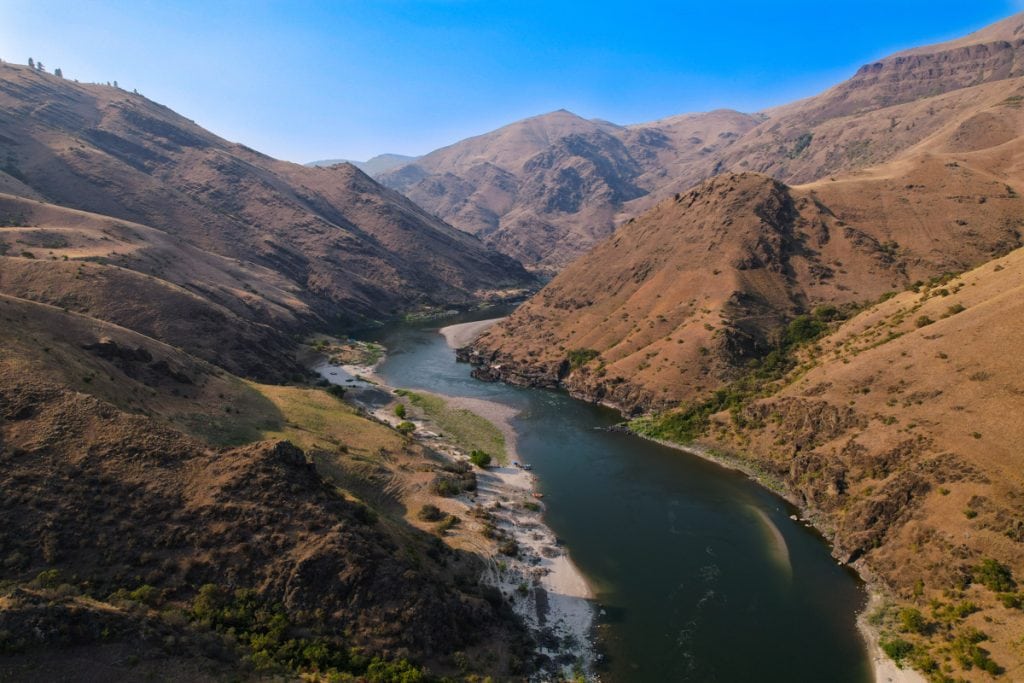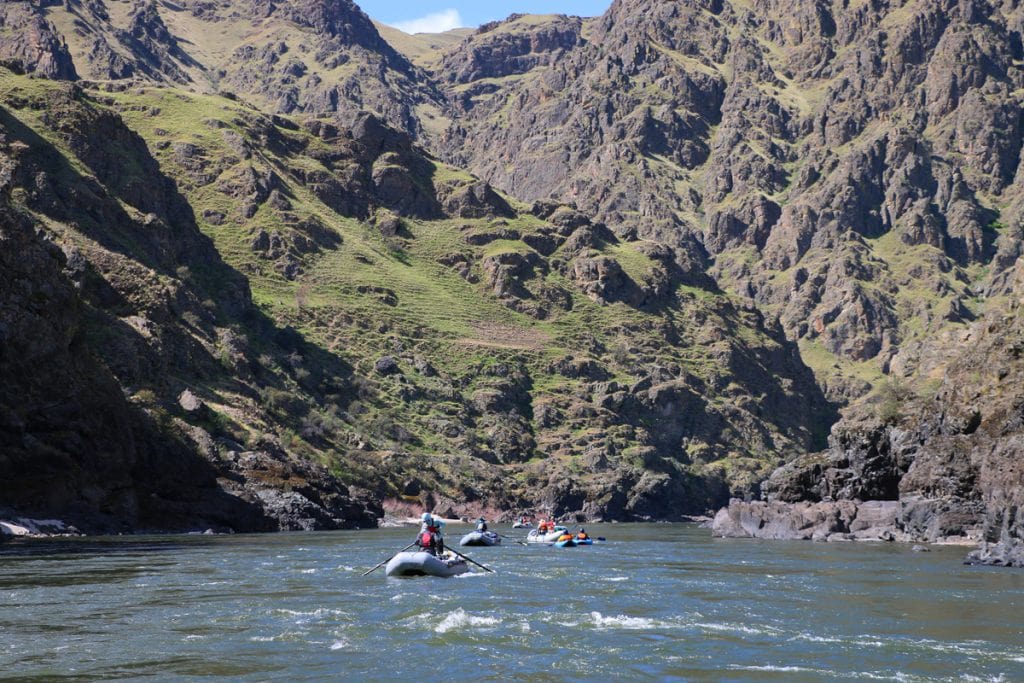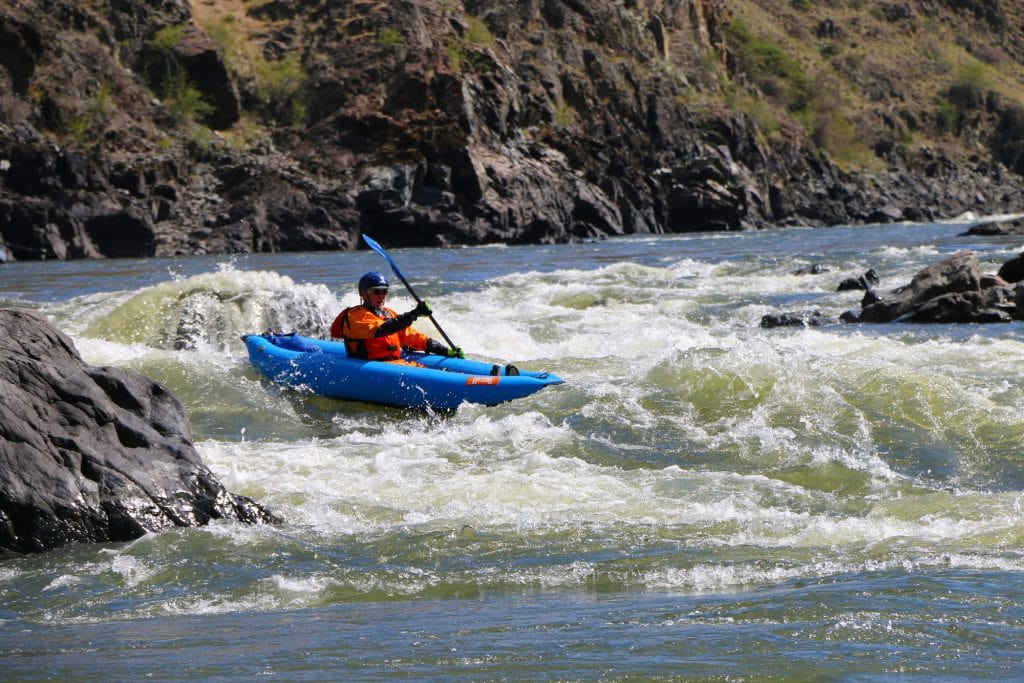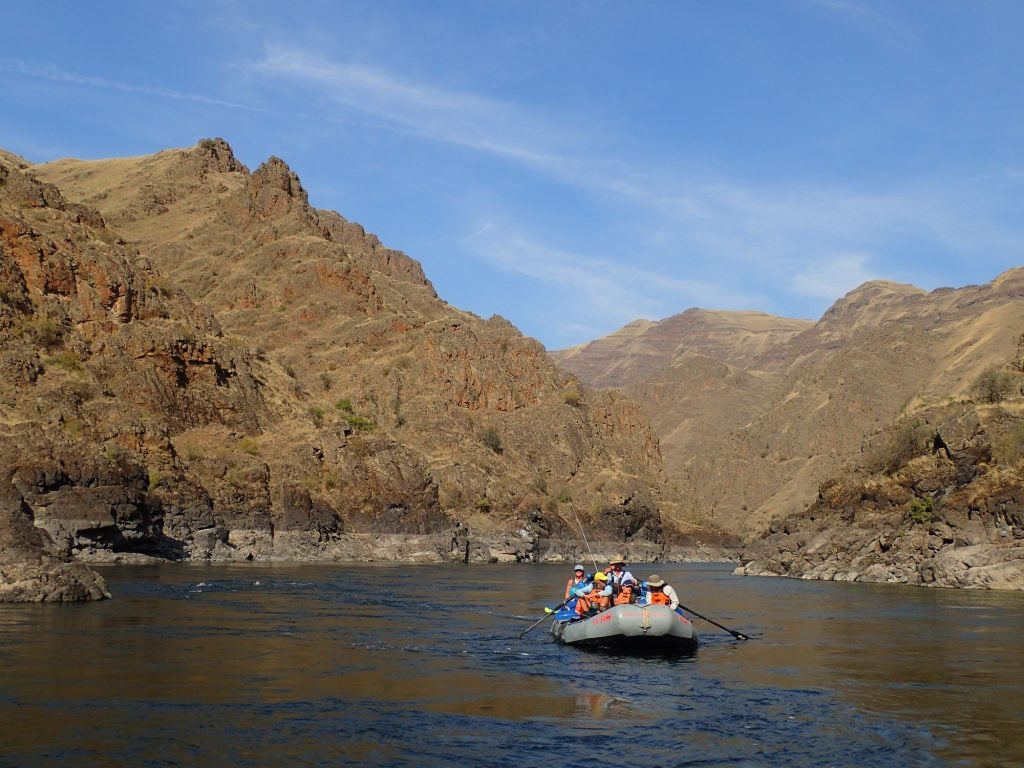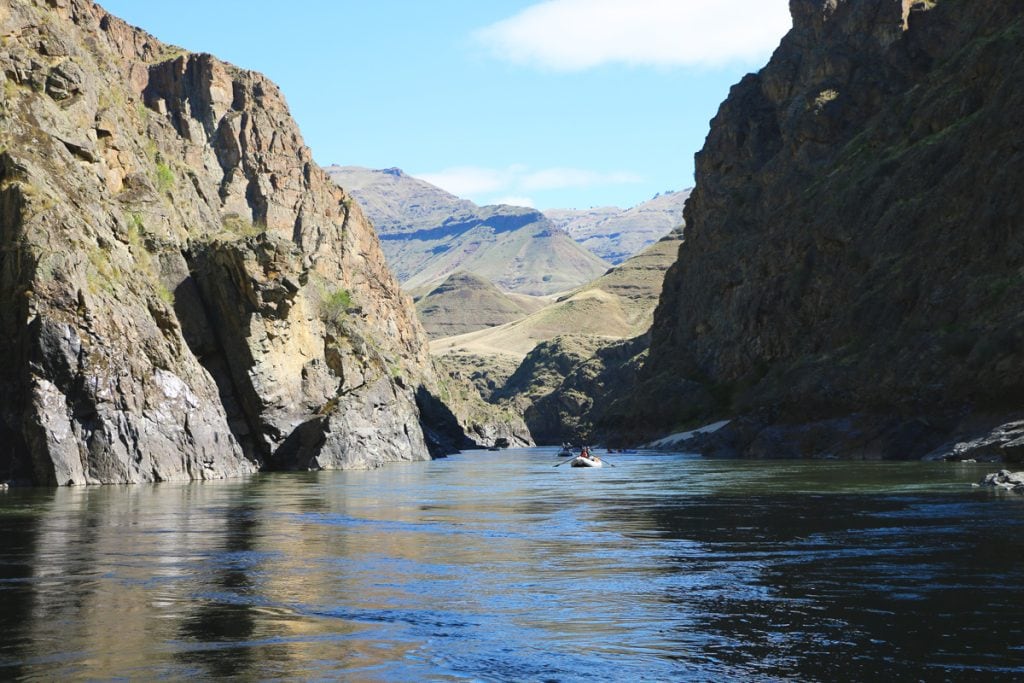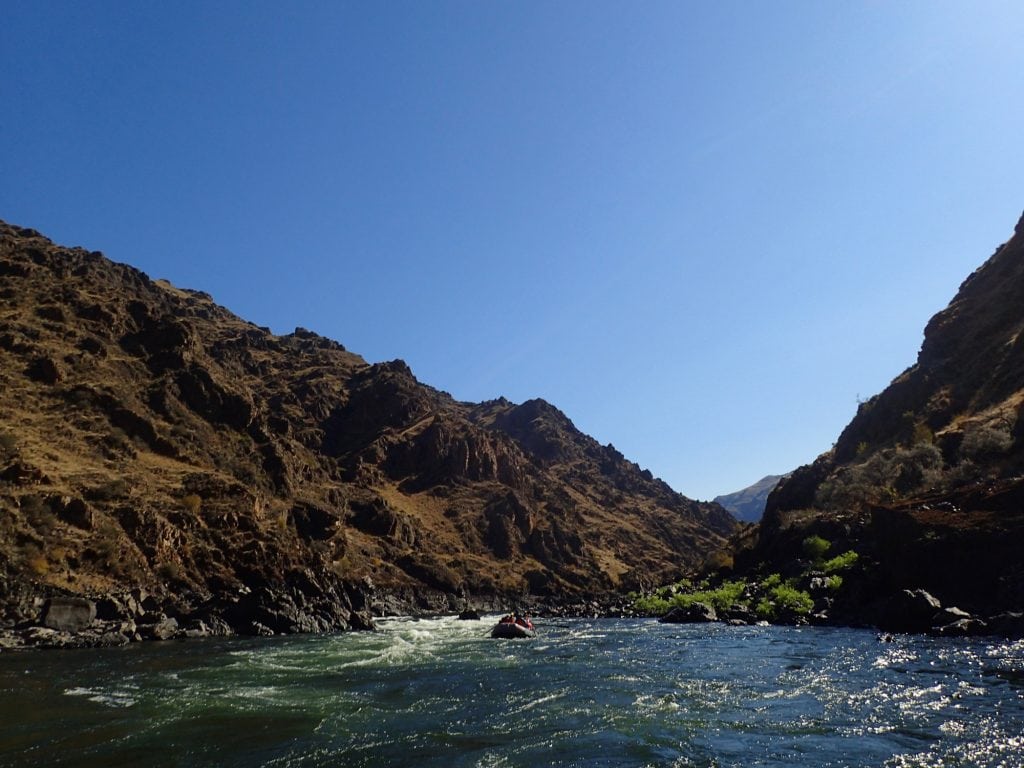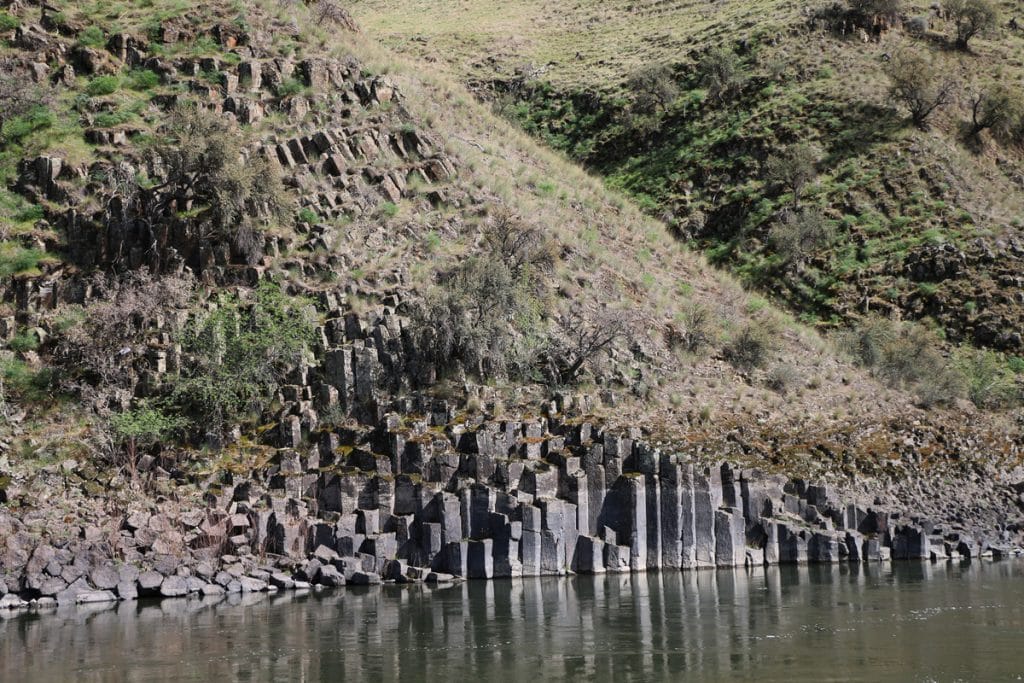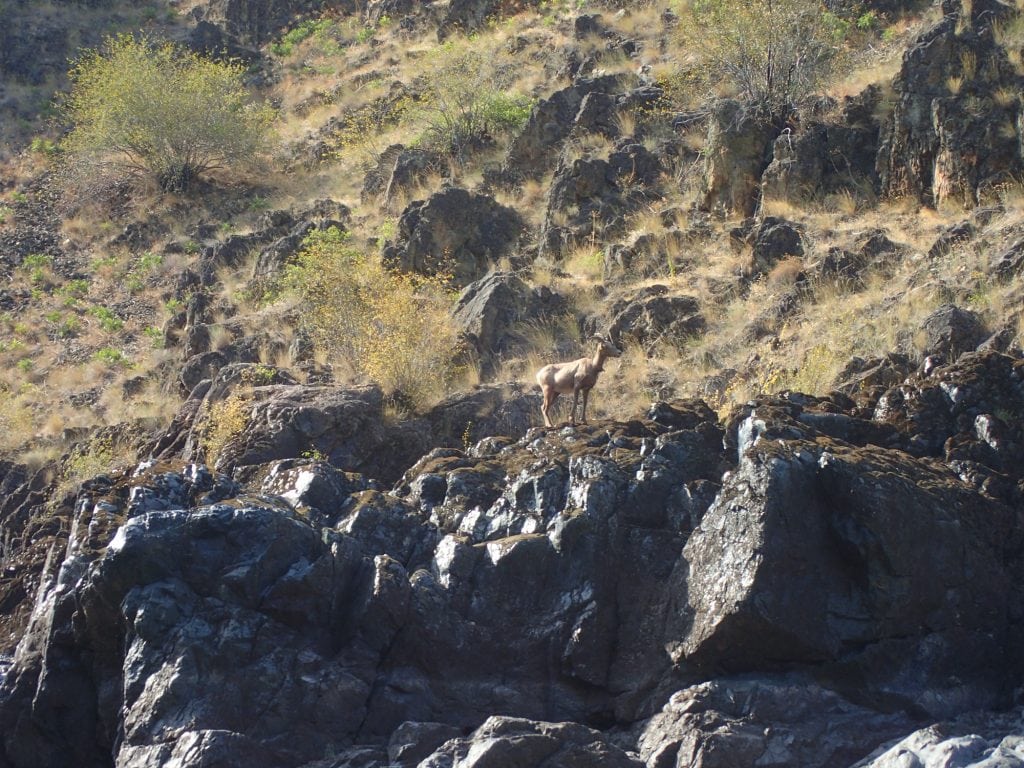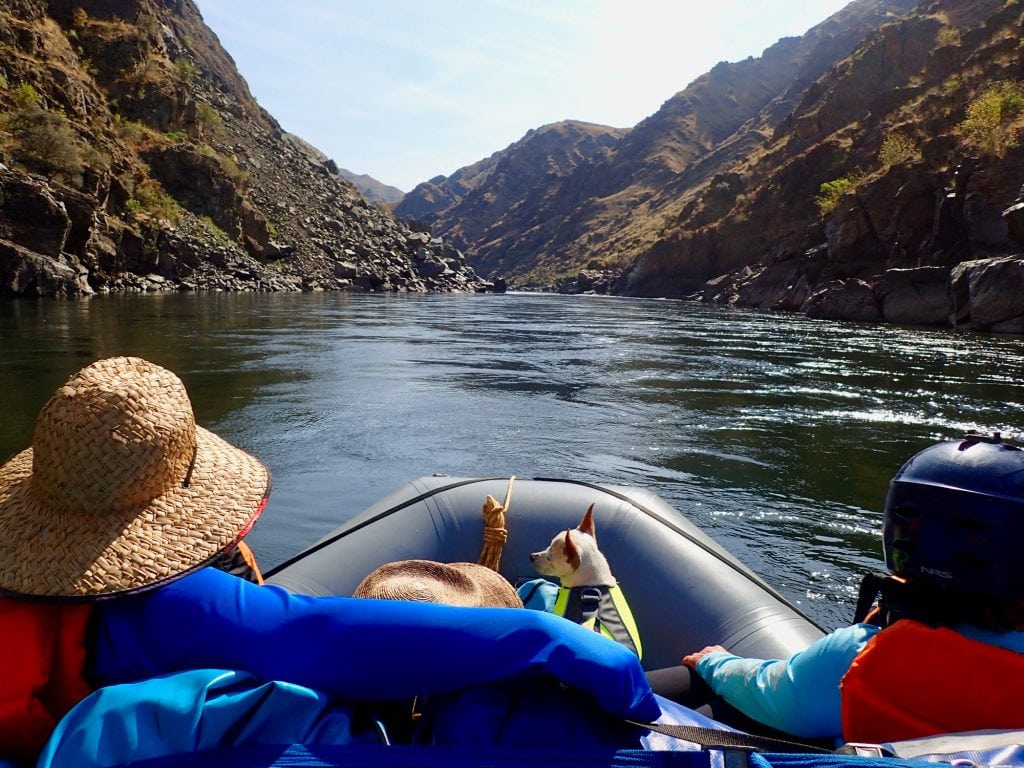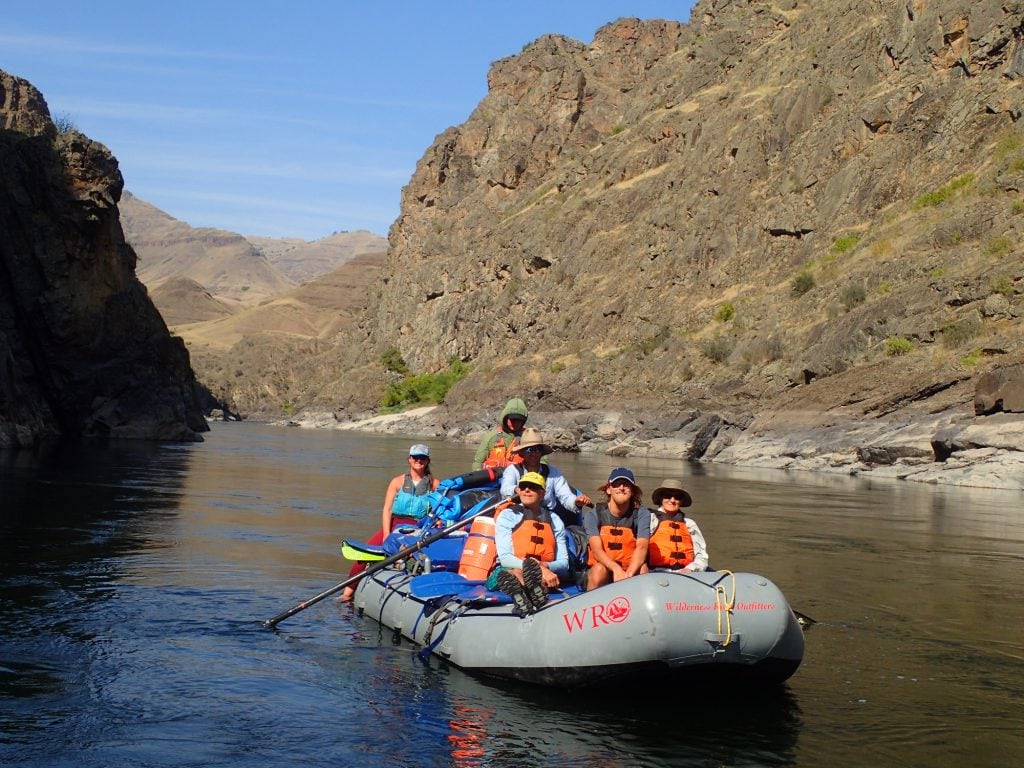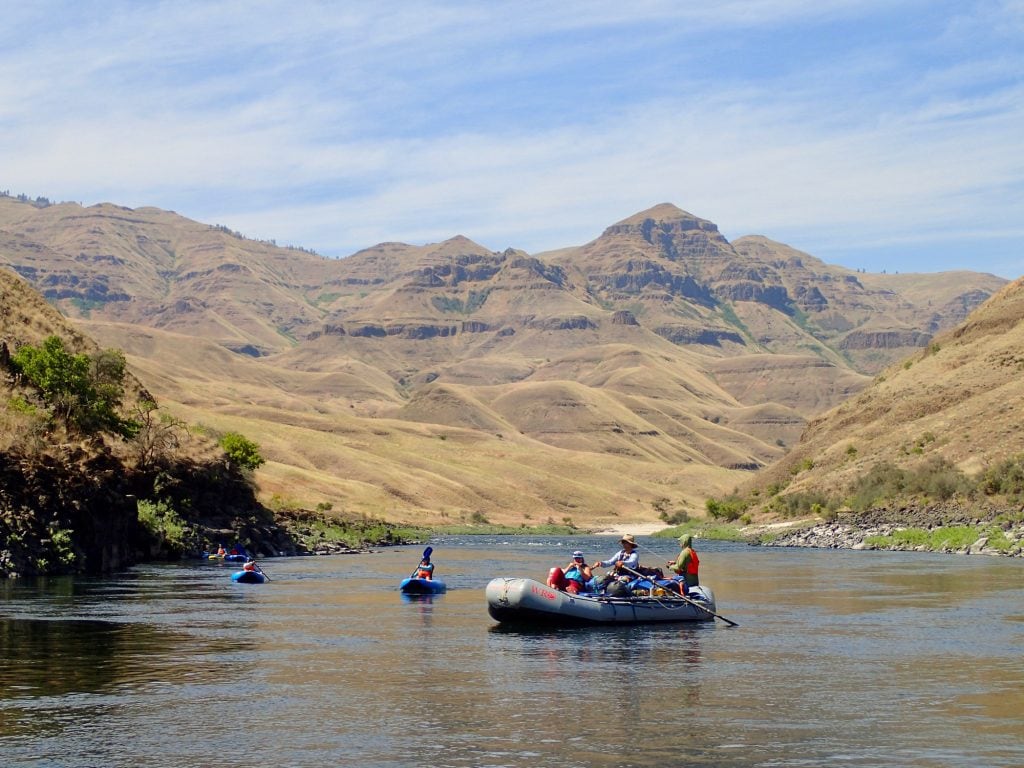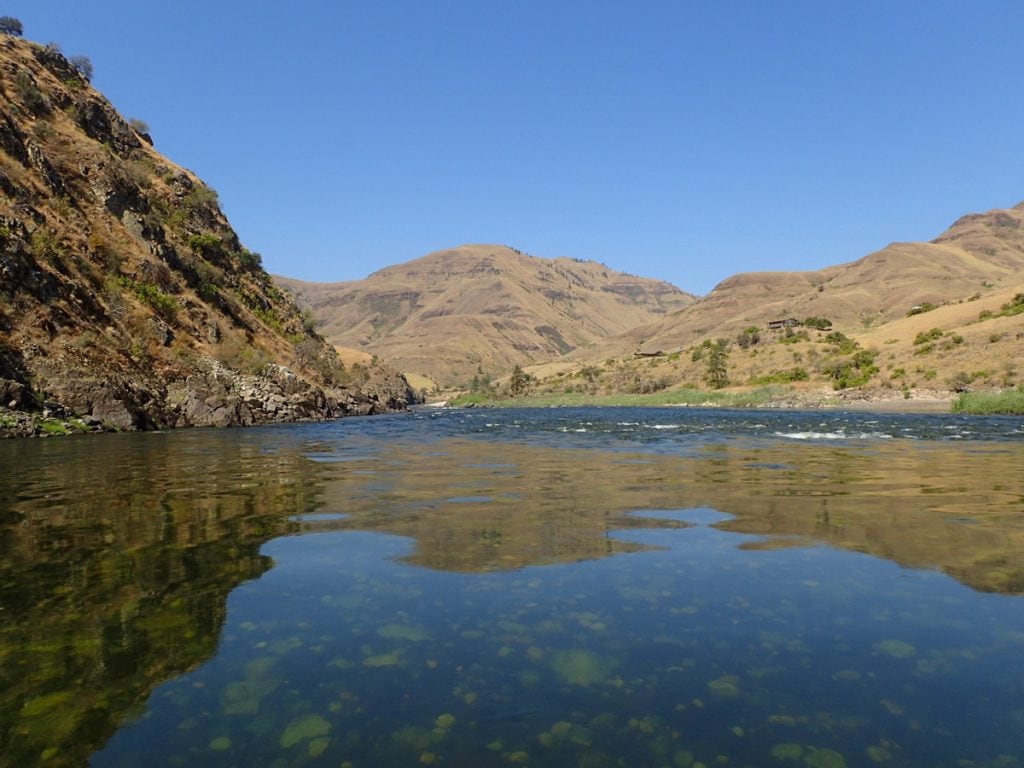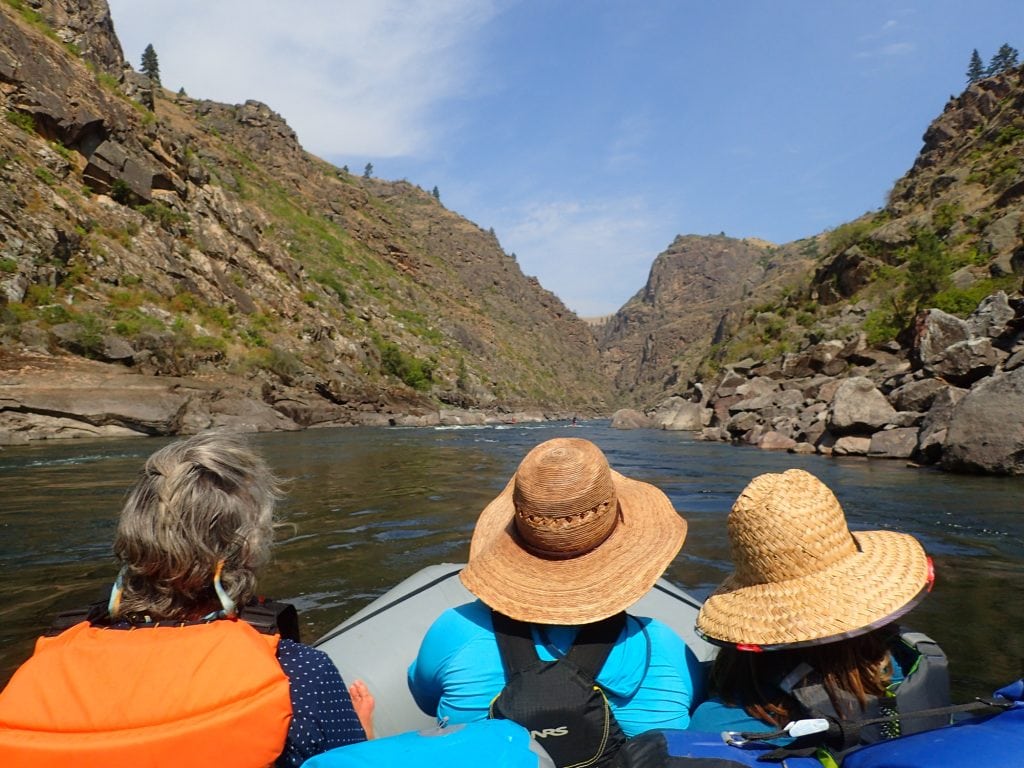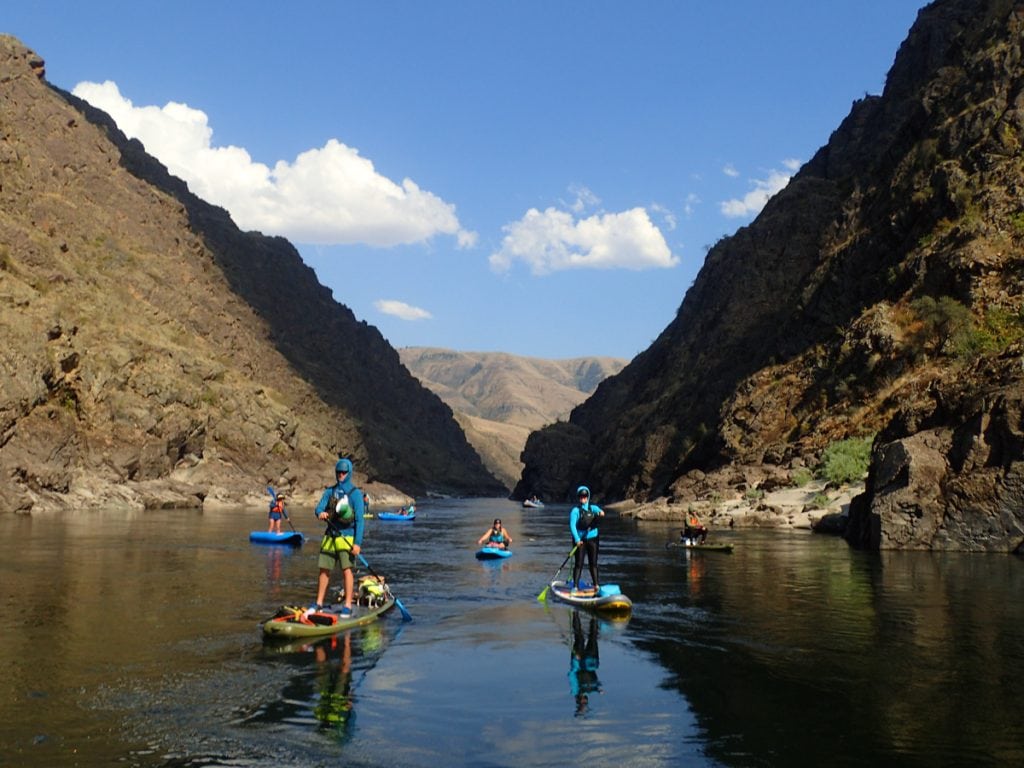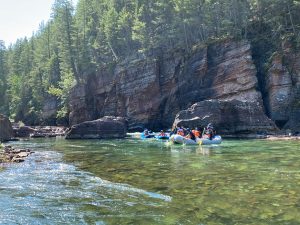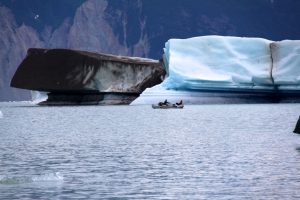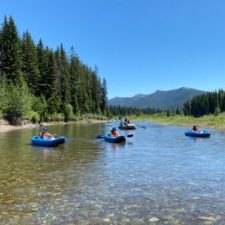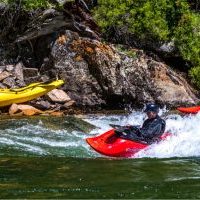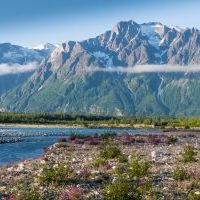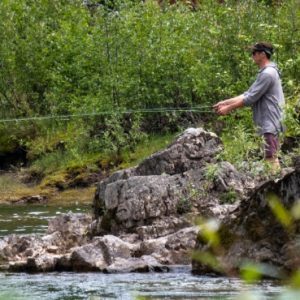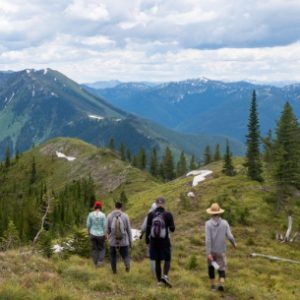Overview
Idaho’s legendary Salmon River remains one of the longest free-flowing rivers in the lower 48. As it reaches its confluence with the Snake, the river flows through a section known as the Canyons, or Gorges, of the Salmon. The landscape here is more wide open than other stretches of river, and the sandy beaches are big. In several of the canyon sections there are also some fun big water-style rapids!
Trip Highlights
- 5 days, 75 miles
- Class II-III whitewater
- Big “pool drop” whitewater
- Idaho mountain/ open Snake Plains landscape
- Great family trip
- Rich pioneer and mining history
- Refreshing water for swimming and paddling inflatable kayaks
- Huge sandy beaches for great games, comfortable camping, and stargazing
- Great stand up paddle boarding
On the Canyons of the Salmon, it’s all about the beaches and family time. You’ll find some of the largest sandy beaches inland of the coast in the middle of the Idaho backcountry, which makes for easy camping and great family trips. Join the kids as they play in swimming holes at camp or enjoy some personal time with a cold drink and a book from the comforts of a shade tarp. Roomy beaches make for plentiful games, and the camp eddy is an excellent spot to cool down on a hot summer day or try your hand at paddle boarding!
The Canyons of the Salmon gets its name from the several canyons you will float through on this stretch of river: Green Canyon, Snow Hole Canyon, and Blue Canyon. Unlike some of the other Salmon River trips offered by WRO, this float is not through a designated wilderness area. But despite the signs of humans and roads you will encounter, the scenery in this section is still beautiful–you will cruise through narrow canyons, camp on sandy river beaches, and watch the Ponderosa forests of the upper Main Salmon begin to give way to the grasslands of the Snake River region.
The whitewater is big, “pool drop” class III whitewater. This big water style means great wave trains for inflatable kayaks, along with many sections perfect for standup paddle boards! We bring an assortment of boats on this section: oar boats, paddle boats, inflatable kayaks, paddle boards, and a wooden dory on certain launch dates. Some of the big rapids to be ready for are Bodacious Bounce, Half and Half, China, Snow Hole and Eye of the Needle.
The lower Salmon also has some big water fishing opportunities–smallmouth bass during the summer, and Steelhead in the fall as they migrate up the river. During the peak of the summer, the water is a great temperature for swimming, but is a little warm for good trout fishing.
As you float the 50 miles of the Lower Salmon River through several impressive canyons, you reach the confluence of the Snake River. Once on the Snake, the currents slow and you start to encounter more signs of civilization as the trip comes to an end.
The Stats
| Departure Month | July, August, September |
| State / Region | Central Idaho |
| Adventure Level | Relaxed, Moderate |
| Price Range | $1500 - $2000 |
| Activities | Whitewater Rafting, Fishing, Inflatable Kayaking, Family Rafting, Hiking, Canoeing, Native American Sites, Pioneer History, Rafting, Wildlife |
Logistics
This trip is relatively simple logistically for your travel plans as it begins and ends in Lewiston, Idaho.
Before the trip:
Travel to Lewiston, Idaho (LWS) no later than 5:30 pm one day prior to your trip’s launch date, with lodging arranged for this first night. We recommend staying at the Hells Canyon Grand Hotel for logistic simplicity. The hotel has a free airport shuttle or parking available to leave your car if you plan on driving to Lewiston.
Plan on meeting for orientation at 6 pm the night before the launch at the Hells Canyon Grand Hotel. Here you will meet your trip leader, other guests that will be on your trip, and we will hand out dry bags, discuss the trip details and answer any last minute questions.
The next morning we will depart the Hells Canyon Grand Hotel and drive as a group to the river put-in at Hammer Creek, about an hour and 45 minute trip.
If you plan on driving, you can have your vehicle shuttled to the takeout with All River Shuttles.
All River Shuttles:
Phone: (208) 839-2308
Text: (208) 553-5411
Website: allriversshuttle.com
Email: [email protected]
Lodging:
Hells Canyon Grand Hotel
Phone: (208) 799-1000
Website: hellscanyongrandhotel.com (online booking)
After the Trip:
We provide transportation to Lewiston from the Heller Bar take out. It is about a 1 hour drive and we usually arrive by late afternoon.
Sample Itinerary
Day Before: Travel to Lewiston, Idaho (LWS) no later than 5:30 pm one day prior to your trip’s launch date, with lodging arranged for this first night. Plan on meeting for orientation at 6 pm the night before the launch at the Hells Canyon Grand Hotel (208-799-1000). Here you will meet your trip leader, other guests that will be on your trip, and we will hand out dry bags, discuss the trip details and answer any last minute questions.
Day 1: We will depart Lewiston from the Hells Canyon Grand Hotel around 8 am and have about an hour and 45 minute drive to the Hammer Creek launch site. You will then meet the rest of your guides, who will have the boats and gear ready to go. A general river orientation and safety talk will be given, and PFDs (lifejackets) will be custom-fitted before getting on the water and starting the adventure!
Day 2-4: We’ll be relaxing on the water and on sandy beaches, running rapids, doing side hikes, exploring historic sites, and anything else you’d like to do! Our schedule is flexible so we can customize the trip to your interests.
Day 5: Once we reach the confluence of the Snake River we will strap the boats together and motor the trip 20 miles to our takeout, Heller Bar, where we will do lunch. You will say goodbye to the guides, who will stay at the takeout to break down the trip. Your trip leader will accompany you on a roughly 1 hour drive back to the Hells Grand Hotel in Lewiston, usually by late afternoon.
FAQs
Camp Life and Meals
Yes, we do normally change campsites every day. This allows us to cover new scenery, rapids, and side adventures each day at a fun, comfortable pace. Occasionally depending on water levels and mileage per day we might do a “lunch-over,” where we camp at the same place we have lunch and allow for more camp time and side activities.
On the River
Clothing, Footwear, and Gear
Logistics
Miscellaneous
Book Now
